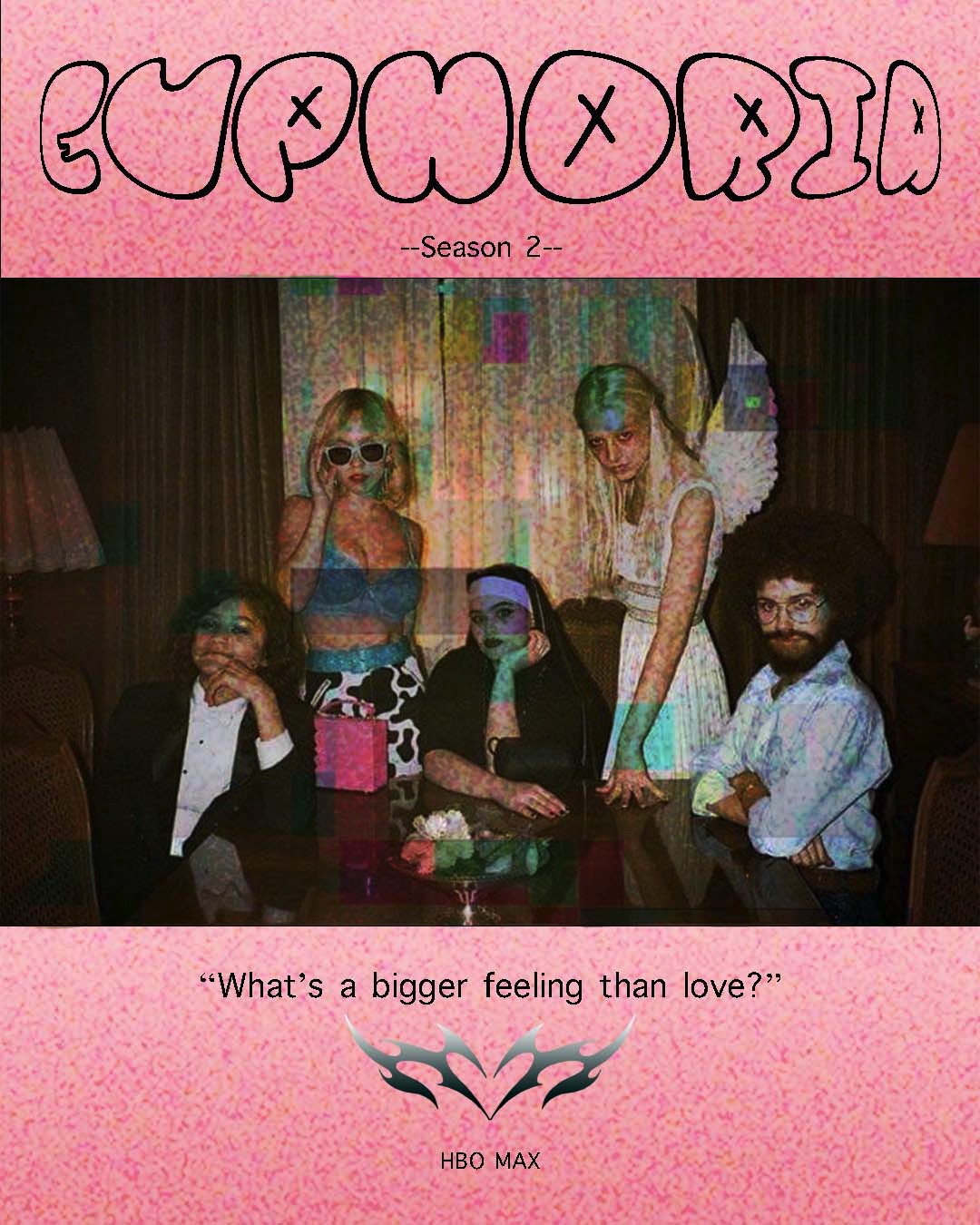
Every Sunday at 9 p.m., watchers all around the world dim the lights, turn on their TVs and get ready to watch yet another chill-and-thrill-filled episode of HBO Max’s “Euphoria.”
The immensely popular show enthralls watchers in with intense sexual scenes, the snorting, smoking and shooting of a plethora of drugs, trendy clothing and makeup looks and a dramatic storyline.
Originally based on an Israeli television series with the same title, “Euphoria” is narrated by a seventeen-year-old girl named Rue, who is played by television star Zendaya.
As the show continues from episode to episode, Rue recounts stories of her high school companions—explaining each one’s struggles with sexuality, parental issues, drugs and their adverse effects, relationship drama and so much more.
“Euphoria’s” high school-aged characters and teenage plotlines have sparked comparisons to shows such as “Degrassi” with similar themes and topics.
However, what makes “Euphoria” so different from typical teenage drama shows, is the insanely vivid and surreal scenes, the aesthetically pleasing shots, and its ability and willingness to display graphic nudity.
The show gives watchers an inside into what it’s like to struggle with drug addiction through an extreme amount of drug use within the show.
This vividness can deeply trigger many, especially those who have struggled with drug addiction or are currently struggling with drug addiction.
For some viewers, these graphic depictions of addiction can cause feelings of stress and anxiety due to the realness of the situations displayed in the show.
Maddie Bass, a sophomore at Georgia State, described the show as “intimate, addictive and triggering,” noting how the show can bring out toxic traits in its watchers.
For Bass, it’s hard just to sit down and watch “Euphoria”.
To calm her anxieties from the show, she has to take breaks in-between episodes to calm her nerves just because of how graphic and honest the show is. However, like most viewers, she always comes back to see what happens in the next episode.
“It’s really hard to watch Rue go through those things and to see how these characters struggle with all of these problems,” Bass said.
“It’s so agonizingly painful, but I still really want to know what happens in the end. That’s why I take breaks from certain episodes whenever the scenes get to be too much.”
Despite these anxieties, “Euphoria” continues to grow in popularity.
As Rue relapses and continues to use narcotic drugs such as opiates and fentanyl, watchers continue to watch in anticipation in hopesthe show’s main character will make it out alive and finally find herself in a place of complete recovery.
“That’s a lot of the reason why I’m still watching,” Bass said. “I really want to see a turnaround with a lot of the main characters, especially Rue.”
“I’ve seen people struggle with addiction before, and it really is so hard to make it out. The show does a really good job of making us feel empathy for Rue despite her addictions, and I want to see her recover.”
The show touches on many mental health topics both relatable and educational. The show’s characters dig into mental health topics such as bipolar disorder and depression, showing a dramatized yet realistic account of what it’s like to struggle with these problems.
Apart from mental health and drug addiction, “Euphoria” is a diverse and inclusive show, giving insight to plus-sized characters, transgender characters and those struggling with sexuality.
The topics and characters in this show are relatable to a wide range of people, making the show so popular and addicting.
Euphoria released its eighth and last episode of the season on Feb. 27. With high hopes and lots of intensity, Euphoria watchers yearn to learn what happens to their favorite characters as season two comes to an end.
